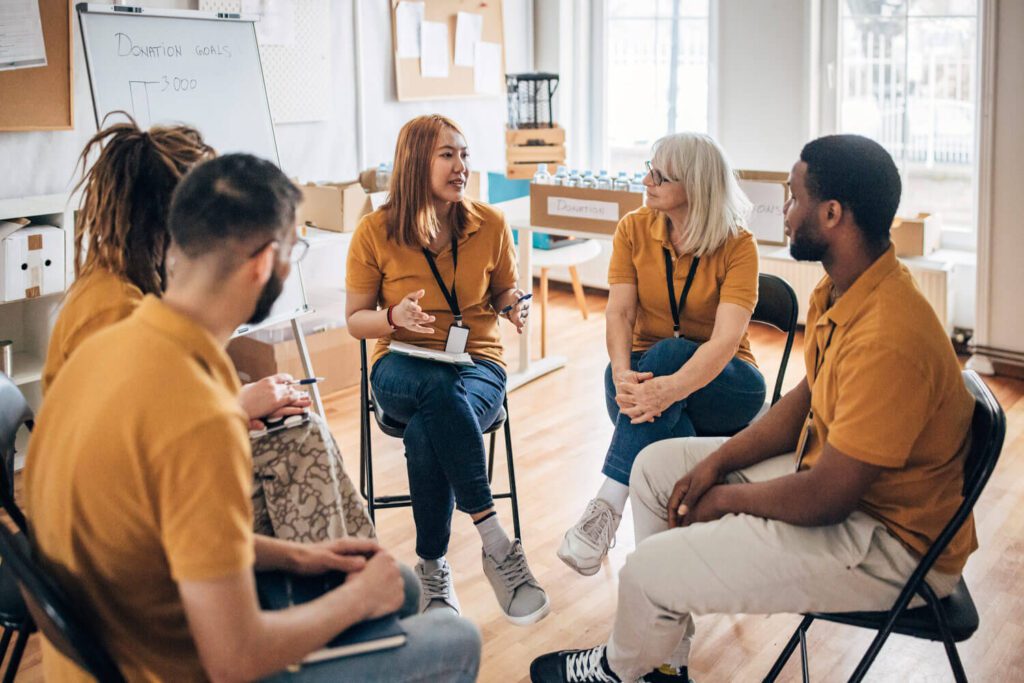Many nonprofit organizations use the fundraising cycle to increase their capacity and acquire new donations. This helps the organization continue to grow and map out new activities and events. The fundraising cycle consists of four parts or phases:
- Identification
- Cultivation
- Solicitation
- Recognition
Identify your prospective donors
Identification, or identifying your target supporters, is the first step of the fundraising cycle. The first resource nonprofit organizations have in identifying new fundraising opportunities is their existing donor base. These individuals have shown dedication to your cause and will likely be willing to help you expand your network. For example, you might request that some of them become peer-to-peer fundraisers to share your organization’s newest initiative with their own networks. Fundraising experts suggest looking internally — specifically to your board members — for new fundraising opportunities. They should be involved with and dedicated to your organization’s purpose on a regular basis. Ask them to reach out to their personal and professional networks, requesting donations and telling others about your cause. The amount of time you spend on identification for new fundraising opportunities will depend on your current level of support versus how much more you need to reach your organization’s goals. For example, if your nonprofit organization’s fundraising goal is $10,000 and you know you can reach $7,000 by reaching out to your current supporters, you’ll need to identify new donors and opportunities to obtain the additional $3,000 in support.Cultivate your donor prospects
Cultivation, or building strong relationships with your donors, is the second phase of the fundraising cycle. This is the most important step for retaining donors and thereby ensuring future donations and overall sustained support. In fact, fundraising resources will tell you that the cultivation phase takes anywhere from six to 12 months. Dedicating a significant amount of time to cultivation is well worth the investment. The more quality time and resources you put into building a strong foundation the more likely donors are to form a meaningful connection with your nonprofit and support you for the long haul!Solicit donations from supporters
Solicitation, or asking for donations, gifts, or support, is the third step and one that you should take with great care. If you’ve put in the time to cultivate strong relationships with your donors before soliciting them, then you should be good to go. Part of properly cultivating your supporters is understanding their communication preferences, how much they may be willing to give, and how frequently to ask. All of these should be discovered during the cultivation process, allowing solicitation to occur smoothly.Recognize the generosity of your donors
Recognition, or stewardship, is showing appreciation for the support you’ve been given and is the final phase of the fundraising cycle. This step should be happening all the time! By regularly showing gratitude for your supporters, you’ll build a strong support system of local donors that will last for years to come. Here are just some opportunities to recognize your supporters:- Celebrate successes: When a fundraising event goes well, express your gratitude to supporters for making it happen. Feeling like they played an important role in your last fundraiser’s success will make them excited for the next one.
- Hold a “thank-a-thon”: Get your entire staff and board members involved in reaching out to your supporters by phone. Dedicate an hour one day to everyone gathering in the same room, calling up supporters to thank them personally.
- Send personalized thank yous: For major gifts or even smaller gifts contributed toward a significant campaign, you should mail personalized thank-you cards and even gifts to some (if not all) of your supporters.
Ready to Get Started?




